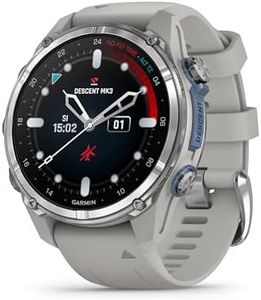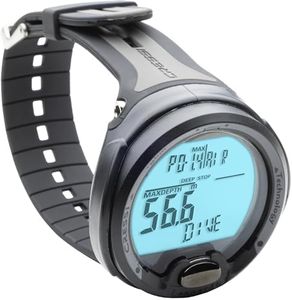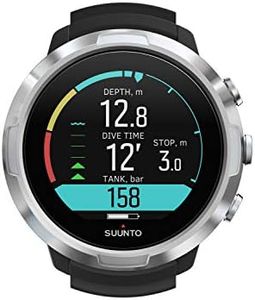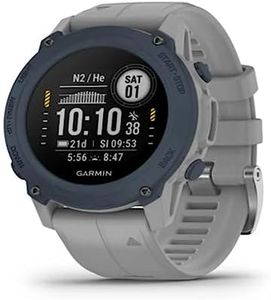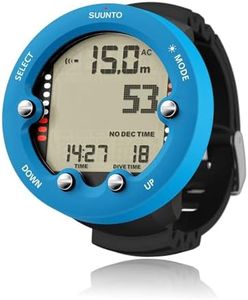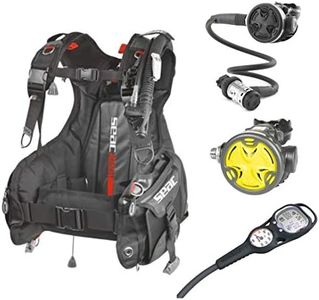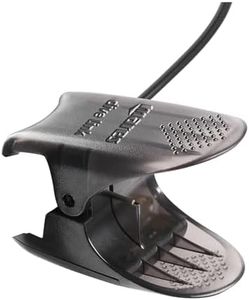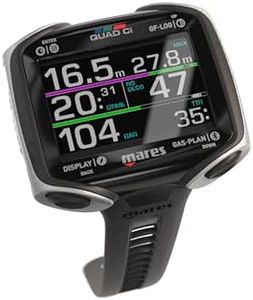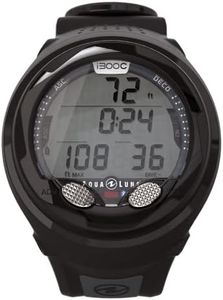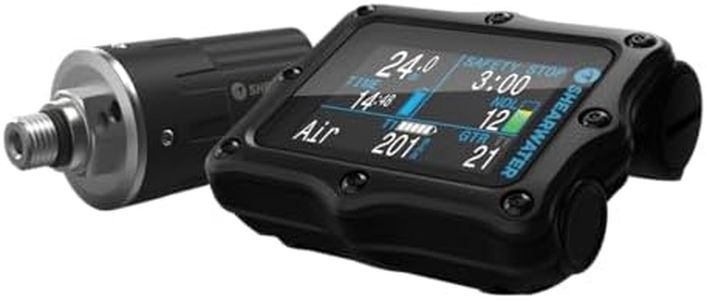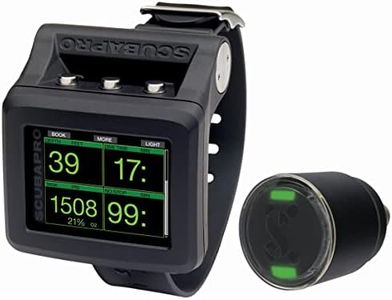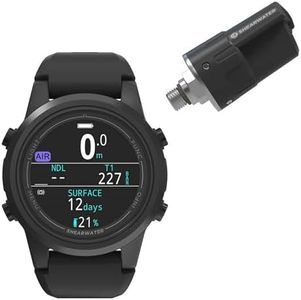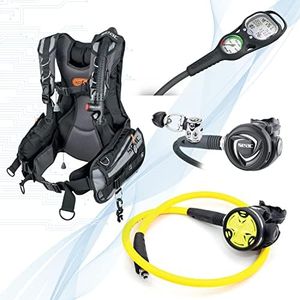We Use CookiesWe use cookies to enhance the security, performance,
functionality and for analytical and promotional activities. By continuing to browse this site you
are agreeing to our privacy policy
10 Best Scuba Diving Computers
From leading brands and best sellers available on the web.By clicking on a link to a third party's website, log data is shared with that third party.
Buying Guide for the Best Scuba Diving Computers
Choosing a scuba diving computer can make your dives safer and more enjoyable by helping you keep track of your vital information underwater. These devices replace traditional dive tables and gauges by displaying real-time data, allowing you to monitor and manage your dive more effectively. When picking a dive computer, it's important to think about your diving experience level, the kinds of dives you plan to do, and the functions you value most. Learn how each key feature works and how it fits with your personal diving needs before making your choice.Display Type and ReadabilityThe display is what you'll look at during every dive, so it's crucial to be able to read it easily under water and in different lighting conditions. Displays can be simple with basic digits or feature high-contrast color screens. Basic displays tend to be smaller and less bright, which may be harder to read for those with weaker eyesight or in poor visibility; high-contrast or color screens are generally larger and easier to read but may use more battery. If you dive mostly in clear, well-lit waters, a basic display could be fine. If you do night dives, have vision concerns, or want to easily read small details, a bright, colorful, and larger display will suit you better.
Dive Modes SupportedDive computers can support different diving modes such as air, nitrox, freediving, and sometimes even technical modes like trimix. Air mode is standard for recreational divers, while nitrox mode is a must if you plan to use enriched air. Freediving mode is important if you enjoy apnea or spearfishing, and technical modes are for advanced divers using multiple gas mixes. Choose a dive computer with modes matching the type of diving you plan to do most often; as your skills progress, you may want one that allows you to expand into more advanced modes.
Algorithm UsedDive computers use mathematical algorithms to calculate your no-decompression limit and other important dive info. Common types include Bühlmann or RGBM algorithms, and each balances safety and allowable dive times differently. Some models allow you to adjust the conservatism of the algorithm for more or less caution, while others use a fixed approach. Beginner and average recreational divers can stick with default or conservative settings for safety, while experienced divers might want customizable algorithms for deeper, longer, or repetitive dives.
User Interface and ControlsThe user interface includes how you interact with your dive computer: buttons, menus, and navigation. Simpler options offer minimal buttons and straightforward menus, while advanced computers offer more customization but can be more complicated to use. If you prefer a device that's easy to use with gloves or underwater, choose one with large, clearly marked buttons and an intuitive menu system. As a beginner, a simpler interface can minimize confusion. Advanced users who like to personalize their data and settings might want more control options.
Battery Type and LifeSome dive computers use rechargeable batteries, while others rely on user-replaceable ones like coin cells. Rechargeable batteries are convenient but require careful charging routines, whereas user-replaceable batteries can be swapped out easily, often on a trip. Battery life can range from a few dives to months of use, depending on display type and features. If you dive frequently or travel a lot, a model with an easy-to-replace battery can save headaches, while occasional or short-trip divers might be fine with rechargeable options.
Dive Log and ConnectivityMost modern dive computers store dive data like depth, time, and temperature. Some offer wireless connectivity so you can upload logs to a smartphone or computer, while others require cables or have basic on-screen logs. If you like to track or share your dives, look for one with generous log storage and easy connectivity. If you're happy just scrolling through data on the device, simpler models will meet your needs.
Size and ComfortDive computers come in various sizes, from compact watch-style units to larger, more feature-rich consoles. Wrist-mounted models are lighter and more convenient for travel, but can have smaller screens, while larger models may be bulky but easier to read. Your choice should be guided by your comfort preferences and how you'll use the computer. If you prefer a streamlined setup and plan to wear it on land, pick a compact style. If maximum visibility underwater is key, a larger model may be better.
Water Resistance RatingAll dive computers have limits on how deep they can safely operate. Water resistance is essential for safety and durability, with typical ratings well beyond recreational dive limits. Make sure to select a computer that comfortably matches or exceeds the maximum depth you plan to dive. For most recreational diving, standard depth ratings are more than enough, but if you plan on technical or deep diving, confirm your device is rated for those depths.
